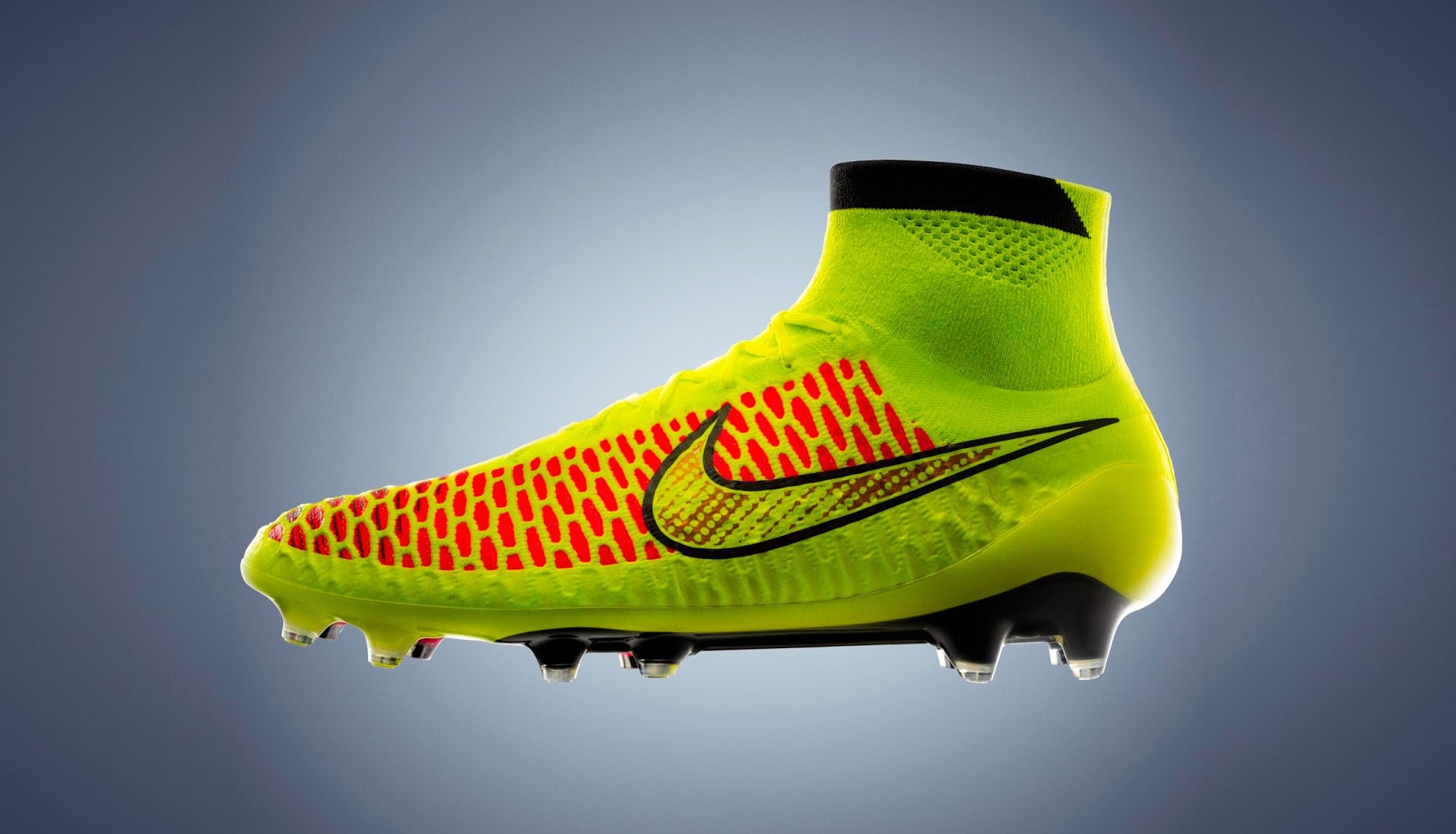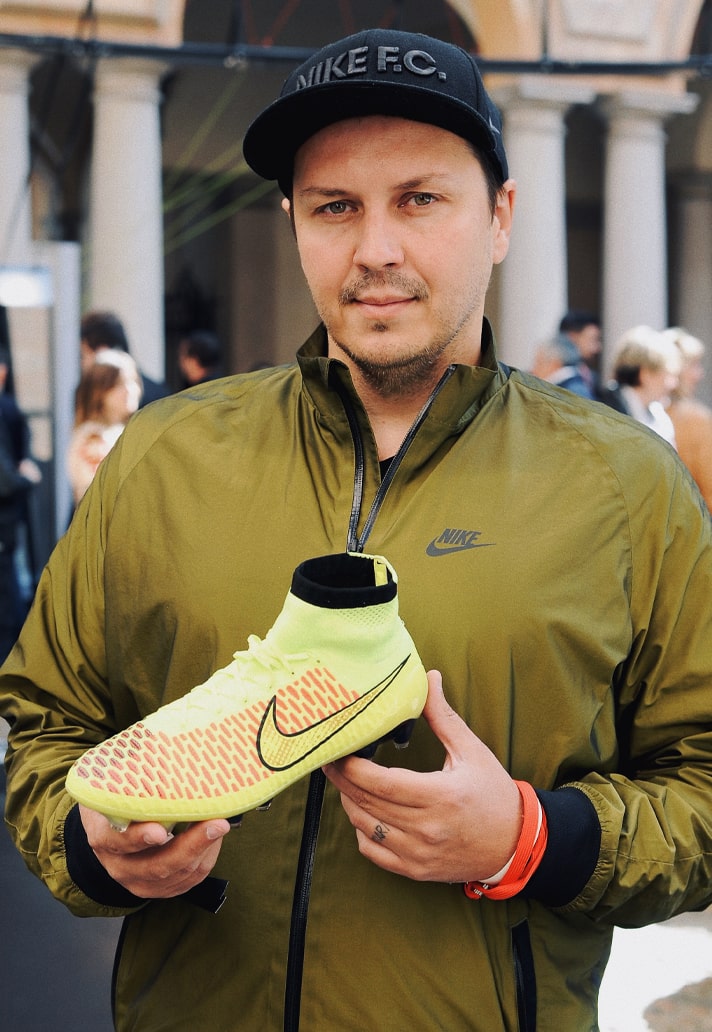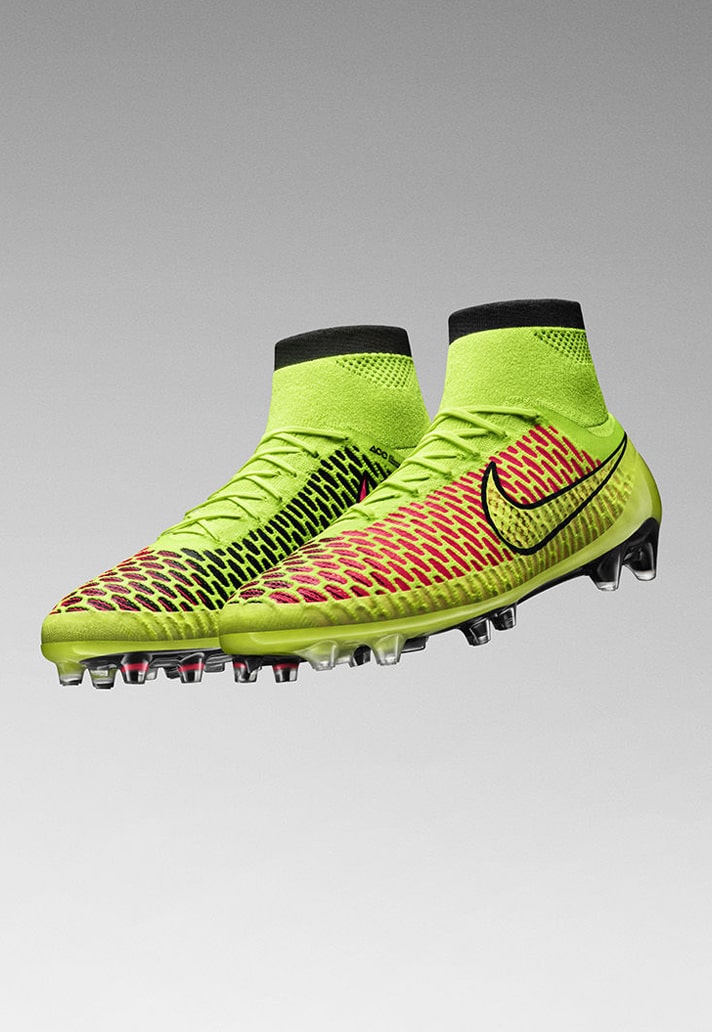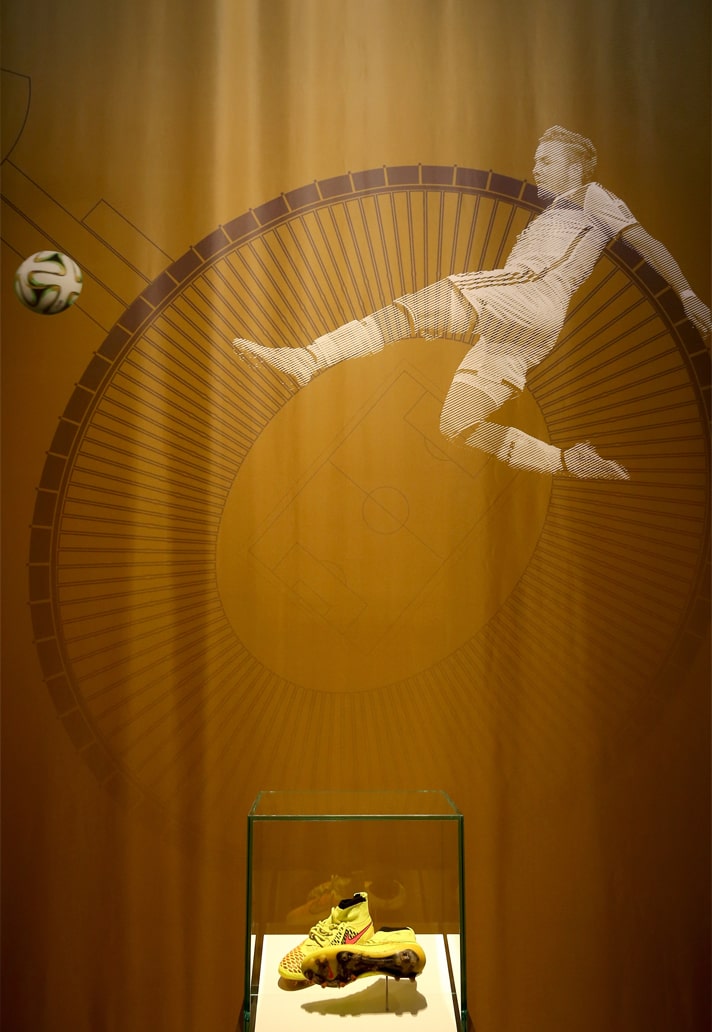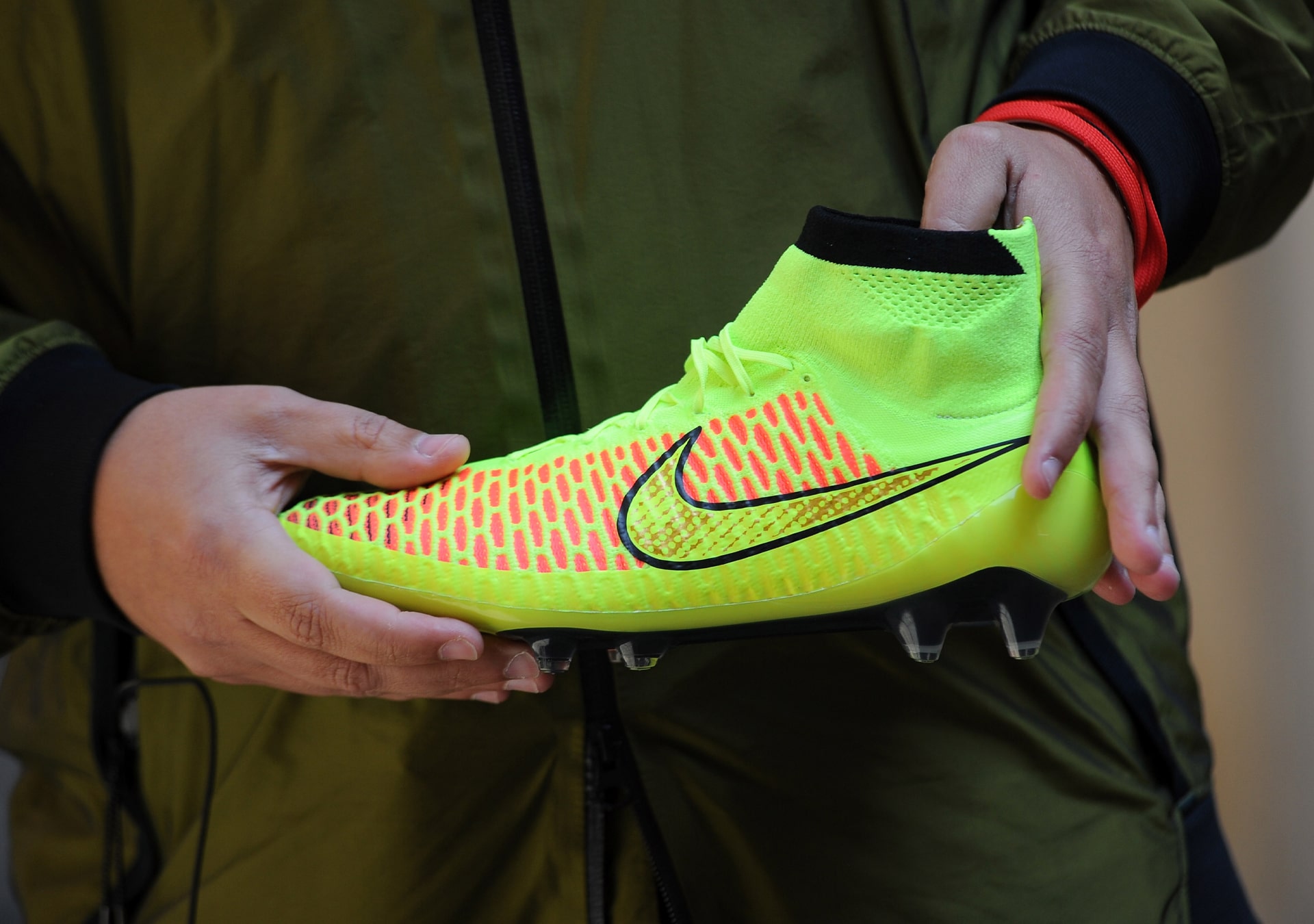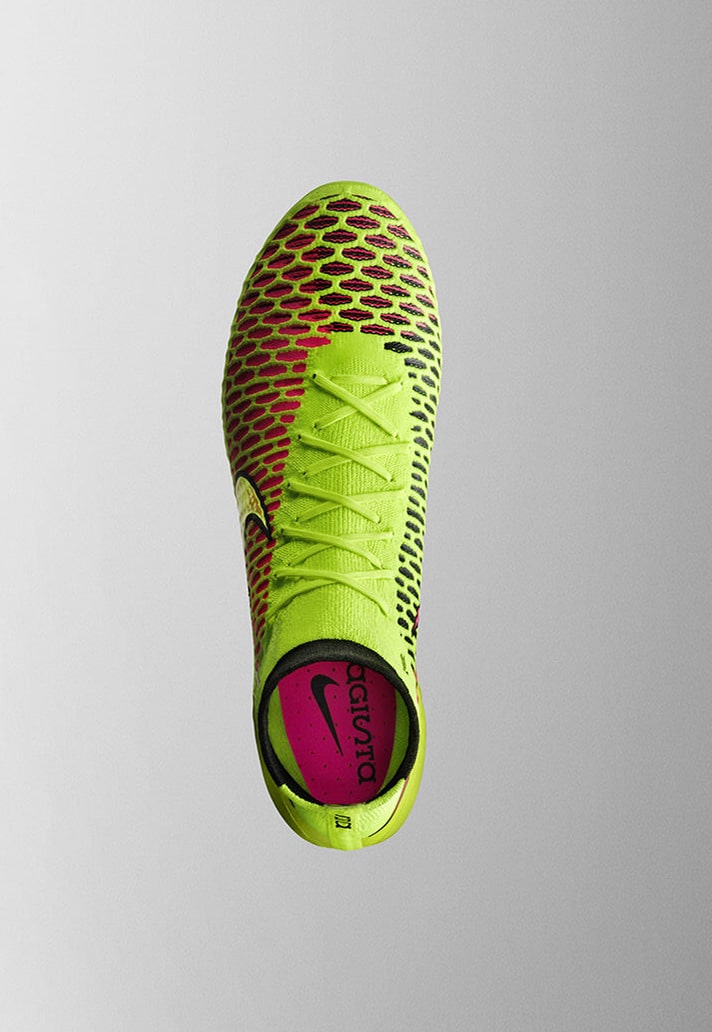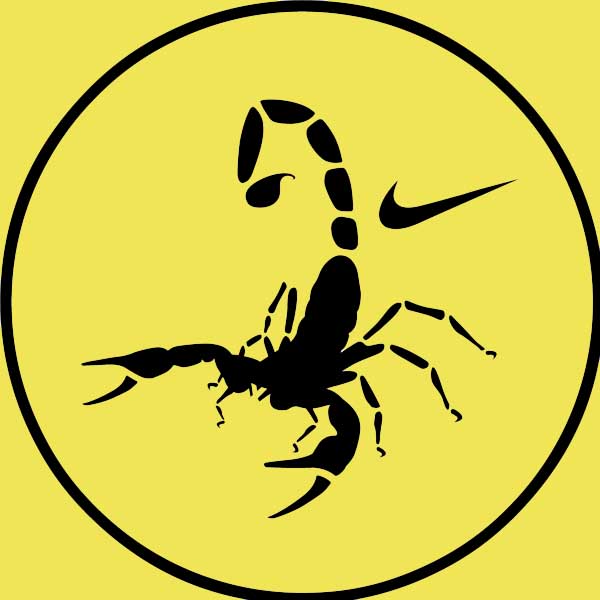13 July 2014. Germany v Argentina. The World Cup final. The grandest stage. With the world watching on, one man’s actions ended up being the difference. That man was 22-year old Mario Götze, and on his feet were a revolutionary pair of boots that would kickstart a new era for Nike Football and define the next decade of boot design for the brand. That boot was, of course, the Magista Obra.
Few boot launches stand as landmarks in the world of football, but upon its official reveal the Nike Magista marked a pivotal shift in the industry. On 6 March, 2014 Nike presented their momentous boot drop at a launch event in Barcelona. The boots were Nike’s first to feature a mid-cut dynamic fit collar and the first to incorporate the brand’s Flyknit technology. A decade after their reveal, the Nike Magista remains one of the most iconic football boot designs of the modern era.
But before we wax lyrical about the boot and its legacy, a quick bit of history. Lets take you back to March 2006; Lotto, a relative minnow in comparison to Nike and their rivals, released a very special boot: the Zhero Gravity. It wasn’t special from a performance perspective per se – it didn’t go on to score the winning goal in the following World Cup final in Germany, and this particular model didn’t even become a staple in grass roots football – but what it did do was introduce the world to the concept of laceless technology in a football boot. For the first time, laces were not just hidden under tongues or lace covers, they were eliminated entirely.
While the Zhero Gravity didn’t quite have the impact that the Italian brand might’ve hoped for, it was the type of innovative thinking that gets people noticed. People like Denis Dekovic.
Following his work on the Zhero Gravity, Dekovic, one of the most forward-thinking designers of the time, was snapped up by Nike. He was initially set to work within the Women’s Training department, and it wasn’t until 2010 – after the World Cup in South Africa – that Dekovic made his move to football boot development. His impact was instant, with success in all the key models, and by 2014 he was unveiling his pièce de résistance: the Magista Obra. Oh, and this one did score the winning goal in the World Cup final.
Flyknit was first introduced ahead of the London 2012 Olympics and Nike has been using the knitted material for certain running shoes ever since. The technology excelled in the running world thanks to its ability to lock in the midfoot, and it was the obvious choice when Dekovic was seeking a material for the Magista that would assist in fulfilling these aims in a boot. Of course, the dynamic movements of football required more than just Flyknit, and so, to provide additional strength and lock-down for multi-directional movement, the designers added Brio cables. These cables were knitted directly into the one-piece upper and locked the eyelet into the outsole, creating strength similar to a suspension bridge.
And so, the design team at Nike, led by Dekovic, had all the pieces of the puzzle that was the Magista Obra and it was initially launched 10 years ago by then-Barcelona playmaker, Andrés Iniesta, who said: “The fit of this boot is so unique that I don’t think about it when I’m wearing it. It allows me to move the way I need to instinctively, and with more confidence.” A phenomenal endorsement straight off the bat.
The design of the boot was revolutionary for so many reasons. Most notably, it was aimed to not just go on the foot, but to be an extension of the player’s body, working with the foot and amplifying sensation. "With Magista, we've designed a shoe that feels like an extension of the player's body," said Phil McCartney, vice president of Sport Performance Footwear at Nike at the time. "It's like wearing a glove; a glove starts at the wrist, not halfway up the hand. You need that transition so you don't disrupt your body's natural movement.
“Flyknit is a material and method of manufacturing that allows us to design footwear that revolutionises fit, creating a sock-like feel against the foot. We’re now building on Flyknit’s game-changing potential and adapting it specifically to football. The second-skin nature of Nike Flyknit technology places the foot closer to the ball and creates a supernatural fit.”
Better friction with the ball was also created by the texture of the knitted fabric, which was waterproofed by melting a thin sheet of a material called Nikeskin over the top. “Previous construction methods required added layers to the top of the boot to get this friction, ultimately moving the foot further from the ball, but Nike Flyknit allows us to knit texture directly into the boot,” said McCartney. “3D knit is new for Nike and for football, and hundreds of revisions were required to get this 3D pattern exactly right. The result of all this work is great ball feel in a minimal package.”
As with its impact in the running world, the success and influence of Magista was quick to spread through the brand’s football boot range, revolutionising Nike’s roster with the Mercurial and Hypervenom quickly following suit in turning to Flyknit (the Tiempo remained a traditional leather option, tried and trusted for its comfort and control).
“Our aim at Nike has always been to meet the athlete’s particular performance demands and amplify his unique set of skills,” commented Mark Parker, NIKE, Inc. CEO and President. “Magista inherits that transformative history of design and innovation and supercharges it.”
The Magista Obra was the first, daring to tread where all others would eventually follow. It was a trailblazer that burned bright for a relatively short period of time, bowing out arguably prematurely in late 2018 to make way for the Phantom VSN. But even in that relatively brief moment its impact was felt and should never be overlooked; without it, the literal fabric of football boots as we know them would likely be entirely different. There’s is a lasting legacy, seen through the enduring popularity of the Mercurial and specifically the Superfly line, as well as sought-after special editions such as the Flyknit Ultra – without the Magista, these boots simply would not exist.
